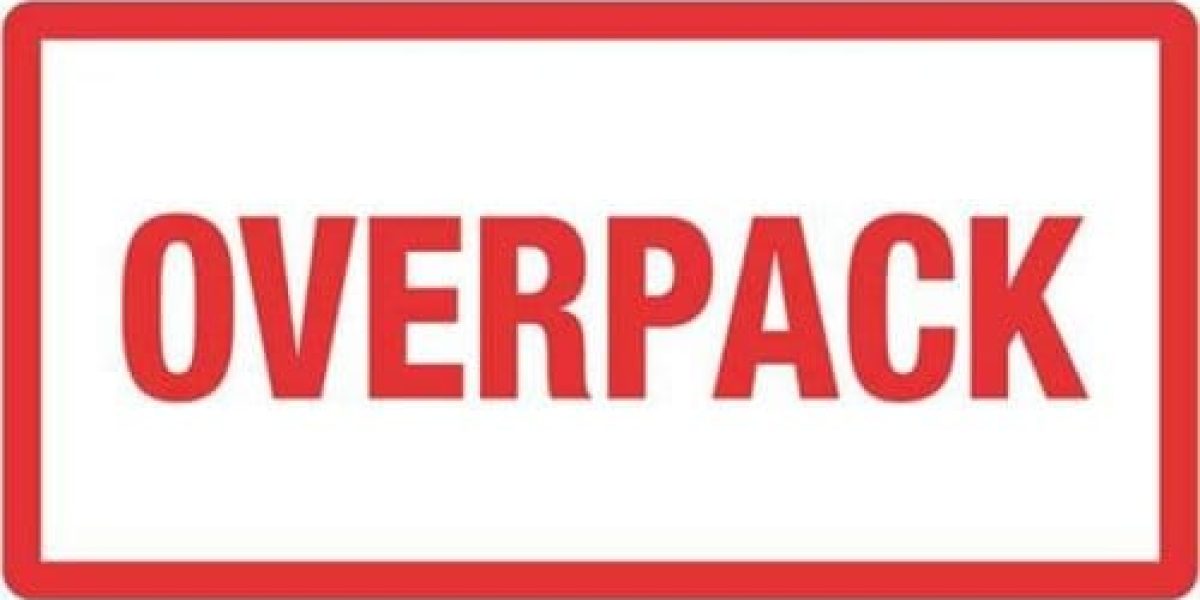If you look up the word Overpack in the Dangerous Goods Regulations it states “An enclosure used by a single shipper to contain one or more packages and to form 1 handling unit for convenience for handling and storage“
This is when you are transporting multiple boxes to the same consignee together on one pallet or placing the multiple boxes in a wood or fibreboard pallet box. Typically when transporting boxes on a pallet the items are secured together by strapping or shrink-wrapping the boxes in one convenient handling unit. This is an overpack. as far as IATA, IMDG and ADR are concerned.
Some shippers have small substances that must travel with other ingredients to form a kit for the buyer or perhaps your outer packaging is small but you always send out in large numbers for buyer orders, you may place the dangerous good’s outer packaging into a larger box to protect them from damage during transport.
When transporting Overpacks by Air, Road or Sea we must comply with the Dangerous Goods regulations.
- If we can see all of the marks and labels that represent the danger on all the boxes, then no further action is required
- If we cannot see all of the marks and labels that represent the danger on all the boxes, the following action is required;
MARKING & LABELLING OF AN OVERPACK
All Modes (Air, Road & Sea) – The pallet must be marked with OVERPACK in 12 mm letters
| Air | Road | Sea |
| When shipping by Air Transport the overpacks must be marked and labelled with the following information; – OVERPACK – Proper Shipping Name & UN# – Full Name & Address of the Shipper & Consignee – Dry Ice Total Weight – Hazard Labels that represent the goods – Any Special Handling Instructions that are Class-Specific or – Marks e.g. Limited or Excepted Quantity Mark, Lithium Battery Mark, Orientation Arrows, – Environmentally Hazardous Substance | When shipping by Road Transport the overpacks must be marked and labelled with the following information; – OVERPACK – UN # – Hazard Labels that represent the goods – Any Special Handling Instructions that are Class Specific – Marks e.g. Limited or Excepted Quantity Mark, – Lithium Battery Mark, – Orientation Arrows, – Environmentally Hazardous Substance Mark | When shipping by Sea Transport the overpacks must be marked and labelled with the following information; – OVERPACK – Proper Shipping Name & UN # – Hazard Labels that represent the goods – Any Special Handling Instructions that are Class Specific – Marks e.g. Limited or Excepted Quantity Mark, – Lithium Battery Mark, – Orientation Arrows, -Environmentally Hazardous Substance Mark |
“Dangerous Goods contained in the Overpack must be properly marked, labelled and in a proper condition as required by the regulations.”
MARKING & LABELLING OF PACKAGES
The dangerous goods regulations require that every dangerous goods package that is being placed in the overpack MUST meet the regulations for Air, Road or Sea. Accurate Marking, Labelling and Handling labels should be found if the overpack is broken down during transportation
So before preparing the overpack the packages inside the overpack ensure that they are accurately marked and labelled.
| Air | Road | Sea |
| When shipping by Air Transport the packages must be marked and labelled with the following information; – Proper Shipping Name & UN# – Full Name & Address of the Shipper & Consignee – Net Weight of dangerous substance or article being shipped * -Dry Ice Net Weight (if required) – Hazard Label that represents the goods – Any Special Handling Instructions Class-Specific as per 7.1.4.1 – Marks e.g. Limited or Excepted Quantity Mark, Lithium Battery Mark, Orientation Arrows, – Environmentally Hazardous Substance label | When shipping by Road Transport the packages must be marked and labelled with the following information; – UN # – Hazard Label that represents the goods – Any Special Handling Instructions Class Specific – Marks e.g. Limited or Excepted Quantity Mark, – Lithium Battery Mark, – Orientation Arrows (if liquids), – Environmentally Hazardous Substance Mark | When shipping by Sea Transport the packages must be marked and labelled with the following information; – Proper Shipping Name & UN # – Hazard Label that represents the goods – Any Special Handling Instructions that are Class Specific – Marks e.g. Limited or Excepted Quantity Mark – Lithium Battery Mark – Orientation Arrows (if liquids) -Environmentally Hazardous Substance Mark |
In summary only correctly marked and labelled dangerous goods may be placed in an Overpack. You cannot just place your dangerous goods articles in an outer package and call this an OVERPACK unless the contents inside are properly marked and labelled.
Correct Packages Incorrect Packages
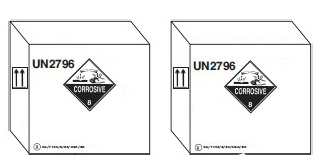
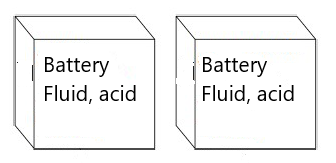
The packages on the right are not correctly marked and labelled as per the regulations
Correct Overpack Incorrect Overpack
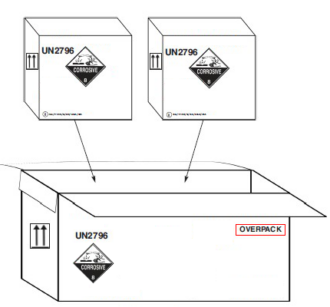
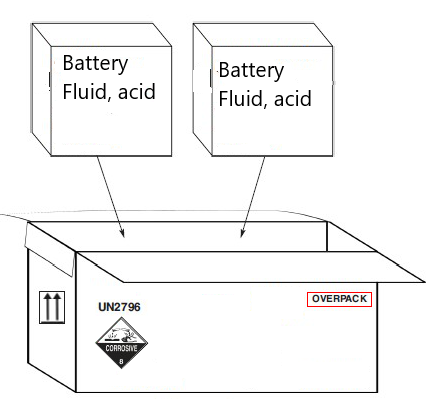
Note: Lithium Ion Batteries that are packed with Equipment is not considered an overpack. The batteries should be secured in inner packages against movement with the piece of equipment they intend to power.
If you need more information on Dangerous Goods and Overpacks, contact the team at Logicom Hub

